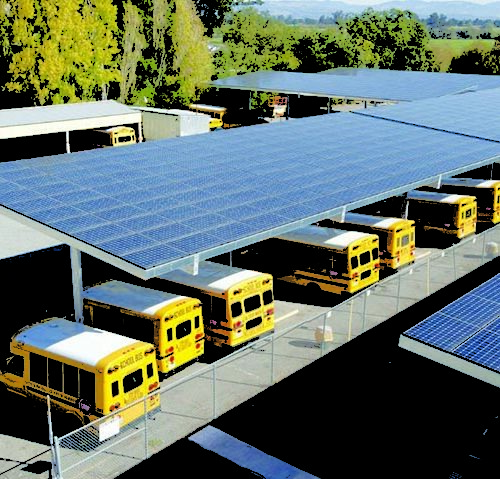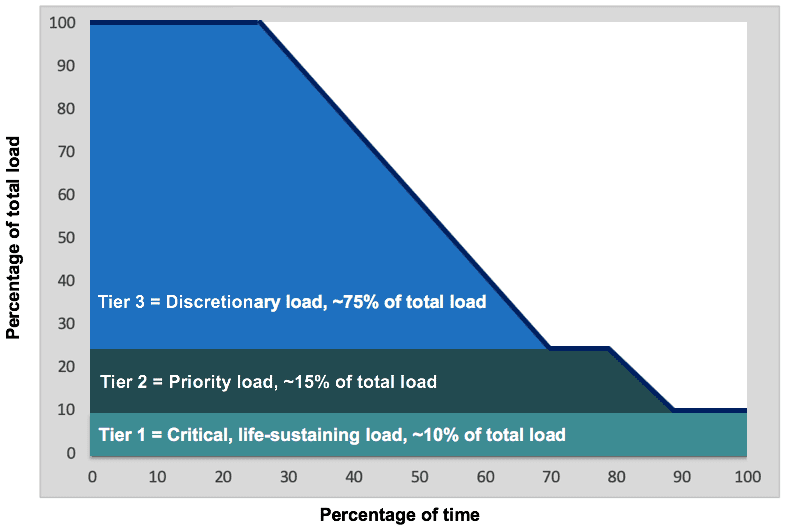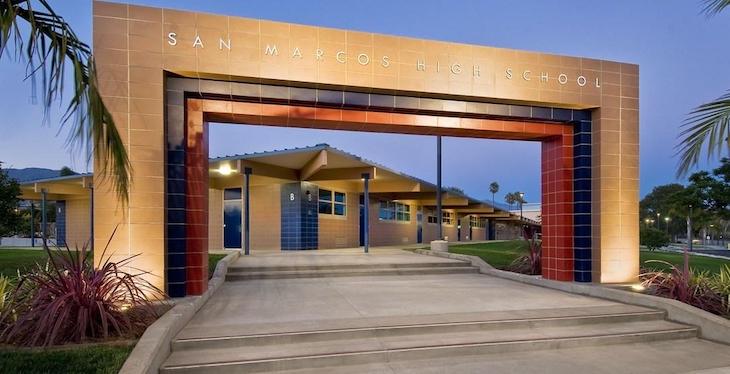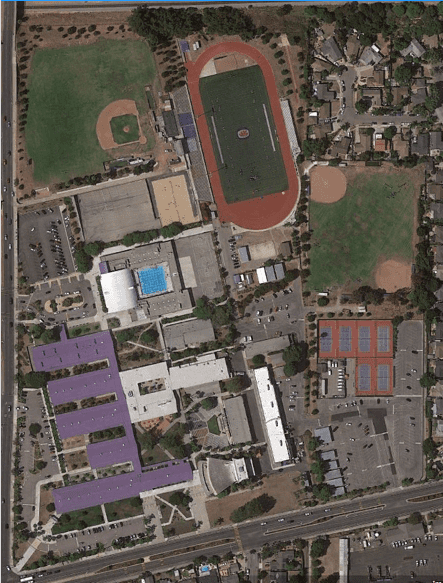Vote No on AB 942: Defend Rooftop Solar Affordability
Redwood Energy reports on Clean Coalition’s expert commentary, warning that AB 942 threatens rooftop solar affordability and undermines the clean‑energy transition
Read article
An ambitious initiative that will serve as a model for school districts throughout the US.
The Santa Barbara Unified School District (SBUSD) is located in one of the most grid-vulnerable regions in California, the Goleta Load Pocket (GLP): a 70-mile stretch of Southern California coastline from Point Conception to Lake Casitas, encompassing the cities of Goleta, Santa Barbara (including Montecito), and Carpinteria.

The GLP is completely grid-dependent, generating very little of its own power. The area gets most of its power from just one set of transmission lines that are hung on the same transmission towers and routed through 40 miles of mountainous terrain — making the GLP highly transmission-vulnerable. The region is highly prone to wildfires, mudslides, and earthquakes — providing the perfect opportunity for Solar Microgrids that will bring the community unparalleled economic, environmental, and resilience benefits.

The Clean Coalition is helping the Santa Barbara Unified School District (SBUSD) with an ambitious initiative for a massive project to stage Solar Microgrids at schools throughout the District.
Working with Sage Energy Consulting, in 2020 the Clean Coalition began helping the SBUSD with an ambitious initiative to implement solar-driven microgrids and electric vehicle charging infrastructure (EVCI) at schools and other sites throughout the District. The Solar Microgrids feature solar and energy storage that will provide long-duration energy resilience to the District, and EVCI will be staged to support District staff and students during the day — as well as providing overnight charging options for neighbors who have challenges installing electric vehicle chargers where they live.

The Clean Coalition worked with the District to identify all critical and proprietary loads, using our value-of-resilience (VOR123) methodology and tools to analyze energy resilience requirements and size the minimum energy storage needed at each site. We designed state-of-the-art request for proposals (RFP) specifications and contract language and guided the selected designer-builder-owner-operator (DBOO), Engie Systems, in the formation of a state-of-the-art performance guarantee agreement (PGA) that defines the guaranteed economic and resilience performance requirements of the Solar Microgrids. The SBUSD will start saving money on Day 1 and will get the added resilience benefits for free.
All 14 sites chosen to move forward with these projects at the SBUSD will have solar carports; 6 sites are contracted for Solar Microgrids and another 8 sites for solar only, with an approximate total over all the sites of 5 MW of solar and 5 MWh of energy storage. The projects are expected to be deployed by the end of 2021.
The six Solar Microgrid sites for the SBUSD are spread throughout the GLP. During power outages, they can serve as emergency sheltering sites for the community, bringing resilience to the region.

The SBUSD is a major school district that increasingly recognizes the value-of-resilience (VOR) and has embraced the Clean Coalition’s vision to implement Solar Microgrids at a number of its key schools and other critical facilities. An extensive analysis was conducted of the feasibility of installing Solar Microgrids at these sites.
The Clean Coalition's new load tiering approach
VOR123 standardizes VOR for critical, priority, and discretionary loads — quantifying the value of resilience provided by indefinite renewables-driven backup power. This methodology shows that Solar Microgrids are economically viable at many SBUSD school sites.
The VOR123 approach tiers electric loads as follows:
VOR123 makes it easy to see that premiums are appropriate for a microgrid configuration that yields:

The VOR123 methodology yields a typical adder of 25%. In other words, a site should be willing to pay an adder of 25% for indefinite renewables-driven backup power to critical loads — along with renewables-driven backup for the rest of the loads for significant percentages of time.
Although a site should be willing to pay an adder of 25% for indefinite renewables-driven backup power to critical loads, along with renewables-driven backup for the rest of the loads for significant percentages of time, many sites can achieve these levels of resilience without paying the extra 25%.
In fact, the SBUSD will get indefinite renewables-driven resilience, worth nearly $7 million for free. That’s in addition to the nearly $8 million in bill savings that the school will enjoy, plus the potential for future value streams:

Download the full San Marcos High School Case Study (PDF)
Download the full San Marcos High School case study (PowerPoint)
SMHS, a Red Cross designated facility, is a large public high school serving 2,000+ students in grades 9 through 12.
School features include:
The SMHS is in the middle of the extensive SBUSD service area, in the heart of the grid-constrained Goleta Load Pocket. The area is surrounded by extreme fire risk.

The SMHS Solar Microgrid is intended to enable the school to operate independently during grid outages of any duration, with indefinite resilience for the most critical loads and resilience for all loads for significant percentages of time.
 The SMHS design calls for 725 kWp of solar, entirely in the form of solar parking canopies, with Net Zero Energy (NZE) exceeded at 101%. The site will also include a battery energy storage system (BESS) of 700 kWh energy capacity and 350 kW power capacity.
The SMHS design calls for 725 kWp of solar, entirely in the form of solar parking canopies, with Net Zero Energy (NZE) exceeded at 101%. The site will also include a battery energy storage system (BESS) of 700 kWh energy capacity and 350 kW power capacity.
The gym and nearby fields are important to the SMHS because those areas would be used for staging for disaster recovery, and potentially for sheltering. The main distribution frame is for the crucial communications system. Because of these needs, for the SMHS the Tier 1 and Tier 2 loads are almost identical in size.
The following table shows break-even costs for Solar Microgrid Power Purchase Agreements (PPAs) for a number of sites in the SBUSD. Based on these values, the break-even cost for a Solar Microgrid at SMHS is 16.7¢/kWh.

The next table shows pricing for Solar Microgrid PPAs at the sites. (Note that the RFP process resulted in even better pricing for the PPAs than is indicated by the figures here.) The green cells indicate pricing that’s lower than break-even values, including the 25% VOR123 adder. Analyses estimated PPA pricing for three Load Management configurations, assuming 25-year PPAs starting in 2020 with 3% cost escalators. Although 3% is the amount that the local utility, Southern California Edison (SCE), is assumed to raise its rates each year, that figure is conservative; SCE raised its electricity prices by about 7% in 2019 and is proposing similar increases in each of the next three years.

It’s important to note that the PPAs are being negotiated with no escalators. That means that the cost-effectiveness of the Solar Microgrids has improved to the point where they will make economic sense at almost all the SBUSD campuses.
Since the tables above were created, the RFP process for the SBUSD has progressed with prices coming in lower than expected — meaning that the Solar Microgrids will be an even better deal. SMHS, and the other SBUSD Solar Microgrid sites, will be saving money on Day 1 — and they will save even more when SCE increases its electricity rates.
As noted above, a typical resilience adder is 25% — meaning that a site should be willing to pay an adder of 25% for indefinite renewables-driven backup power to critical loads, along with renewables-driven backup for the rest of the loads for significant percentages of time.
However, the SBUSD will get indefinite renewables-driven resilience for free.
The latest in clean local energy
Learn about our innovative projects and initiatives on our blog, and see what others are reporting about our important work.
Redwood Energy reports on Clean Coalition’s expert commentary, warning that AB 942 threatens rooftop solar affordability and undermines the clean‑energy transition
Read articleThis Clean Coalition hosted webinar took place on 27 June 2025 at 10:00 AM PST.
Read MoreThis blog post highlights the RGL Community Microgrid, which will provide clean energy and resilience to a disadvantaged community (DAC), utilize master metering, and serve as a critical model for future multi-unit housing (MUH) projects and master metering policies.
Read More